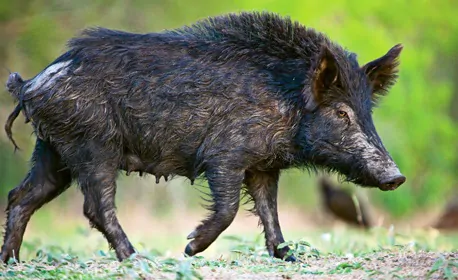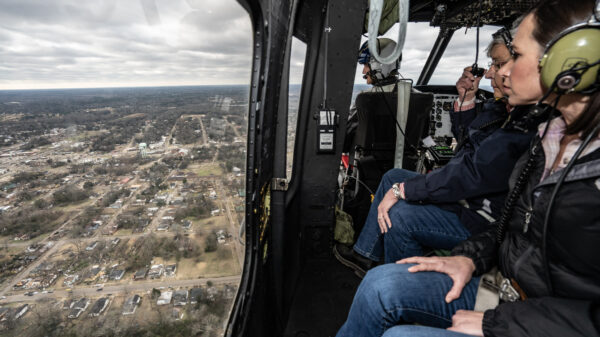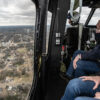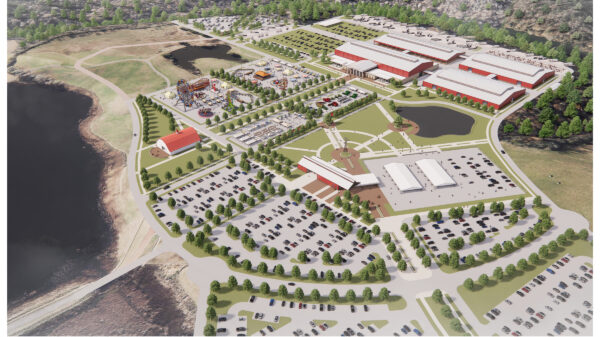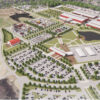By Brandon Moseley
Alabama Political Reporter
Alabama Commissioner of Agriculture John McMillan (R) reported on Facebook that the state of Alabama and federal officials have just finished a two day conference at the Embassy Suites in Downtown Montgomery to look at ways to deal with a growing problem from feral hogs.
s expedition and the extremely adaptable omnivores have been escaping domestication into the wilds of Alabama ever since. The Alabama Political Reporter observed 4 wild hogs grazing in the Eufaula National Wildlife Refuge in open daylight this spring. Those were just four of the estimated over 250,000 wild hogs which call Alabama home. There are 5 million now in the United States.
Alabama allows hunting of wild hogs 365 days a year, but hunting has not been an effective control. Recreational hunters have actually contributed greatly to the problem by illegally live trapping feral hogs and transporting them to parts of the state where they weren’t already introduced. Dr. Smith with Auburn University and the Cooperate Extension Service told The Montgomery Advertiser, “Then that population grows, and then we have a problem with those pigs destroying habitats and crops.”
It is estimated that wild hogs cause more than $1.5 billion in damages in the United States and much of that is in Alabama. Modern mechanized farming methods means that fewer farmers farm more acres farther from home thus effectively patrolling larger fields to protect them from the swine is tremendously difficult for farm families. Where fields are fenced, fencing is often inadequate to keep the wild hogs out of fields.
Autauga County farmer Harold Gaines told ALFA that he and his sons, Levi and Dan have had to work around the clock to protect fields from feral swine that rooted up seeds and destroyed crops. Last year, “We worked 14-hour days planting, and then the three of us took shifts through the night to guard the fields. We can’t continue that on a long-term basis.”
“This is a national issue,” said APHIS Administrator Kevin Shea, who toured swine damage at Autauga County farms April 15. “We’ve seen corn that’s been trampled and eaten up by the wild pigs. We’ve seen the traps and fences farmers have to put up. This costs a farmer thousands of dollars. So we’re here to figure out what we can do to help reduce and stop this damage.”
Shea said the majority of the funding will go directly to operations, and each affected state will develop an individual plan to reduce or eliminate the increasing feral swine populations. Officials said that some of the funds will be used to address the illegal transportation of pigs for hunting, which is the largest reasons the population has doubled in the last 10 years.
The Eastern Regional Director of Wildlife Services Charles Brown said, “With this funding, we will work with landowners and property managers to put more active trapping programs in place; encourage producers to get hogs off their property before they multiply and spread; and hopefully work with state regulatory officials to stop the illegal movement and transport of feral swine,” said Charles Brown, the eastern regional director of Wildlife Services. “The overall goal is to reduce damage. That’s the bottom line.”
Wild hogs are a growing problem across the country and the state. Experts from Auburn University said that trapping is the best control of the prolific animals.
The conference featured keynote speakers from federal agricultural groups, farmers and vendors showcasing exhibits and equipment use to hunt or trap feral pigs.
Wild hogs do damage to crops, they also raid residential areas and destroy landscaping, prey on small livestock, compete with wild animals for resources, and contaminate water resources.
Dr. Steve Ditchkoff with Auburn University’s School of Forestry and Wildlife said most of the hogs are in south Alabama but their range is expanding, “Probably 60 to 70 percent of the counties in Alabama have feral swine to some extent. There are spots all over and those spots are increasing as hunters are moving them to new areas for hunting.”
Congress has appropriated $20 million to the United States Department of Agriculture’s Animal and Plant Health Inspection Service (APHIS) to control the swine problem through the newly organized National Feral Swine Damage Management Program. APHIS administrator Kevin Shea said that the population of the pigs have doubled in the last 15 years. This is the first organized national effort to control the feral swine.
Shea told ‘The Montgomery Advertiser’, “We think there are five million wild pigs in the United States and of the $1.5 billion of damages they are causing, we estimate more than $800 million of it is direct damage to agriculture.” “Alabama has a large population of feral swine and will do all we can to help here.”
John McMillan has been Commissioner of the Alabama Department of Agriculture and Industries for four years and is seeking re-election.
The Republican Primary will be held on June 3rd.







































